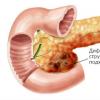There are legends about viburnum, it is used in cooking and cosmetology, and is also actively used to maintain health. Beneficial features Viburnum vulgaris is valued by traditional healers and gurus of official medicine. It is not surprising, because the plant, common in gardens and parks, contains a huge amount of useful substances, thanks to which many diseases are successfully treated.
Plant characteristic
Viburnum can grow as a tree, but is more common as a shrub. The plant is a long-liver - it grows and develops up to 50 years, and under favorable conditions and protection from pests even longer. The height of viburnum sometimes reaches five meters. Broad foliage and noble appearance make the plant an enviable decoration of garden plots and park areas.
Where does it grow
Common viburnum can be found on the banks of a river or near a lake, in wetlands, as the plant loves well-moistened soil. It grows in shade-rich forests of deciduous trees, located on its edges and outskirts. The plant prefers tropical and temperate climates. In the regions of the European part of Russia, it grows according to middle lane, and in the South of the country grows everywhere.
China and Japan are considered to be the birthplace of almost all types of viburnum. The plant is also distributed throughout North America. It is found in countries of Europe with a warm and temperate climate. Viburnum is cultivated for the preparation of medicinal raw materials, for culinary purposes, and also as an ornamental shrub.
Botanical description
The red viburnum shrub reaches a height of 2.5 to 4 m. Gray, with a brownish tinge of bark, covers the woody parts of the shoots. On it you can see longitudinal cracks, the damage of which by pests causes damage to adult viburnum bushes.
- Run away. They are round in shape and yellow-brown in color. Some parts of the plant may be grayish white. Hex core inside white color with a reddish tint. At the tips of the fruit shoots there are two false buds, between which you can see the continuation of the shoot. Barren shoots end with a single terminal bud.
- Leaves. Quite large: length and width vary from 5 cm to 8 cm. They are broadly ovoid or rounded. Complex - divided into three or five lobes. The upper part is naked, the surface is wrinkled, the color is dark green. The lower part of the leaf has a gray-green color due to dense pubescence. The edges are often serrated. The placement of leaves on the branches of the plant is opposite, the attachment is petiolate. The petiole has furrows, and reaches a length of 2 cm.
- flowers. They have a light, white-green color. Each inflorescence is an umbrella-shaped panicle 8 cm in diameter and about 5 cm long, located on the tops of green shoots. The edge of the inflorescence consists of barren flowers, which stand out from the rest in larger sizes. The middle of the inflorescence is formed from small heteromorphic flowers. The active phase of flowering of the plant falls at the end of May - beginning of June.
- Fruit. Drupes, spherical in shape, forming voluminous clusters. Painted bright red. Inside is a large bone up to 9 mm long. The pulp of the fruit, with sufficient juiciness, is distinguished by astringent bitterness. The intensity of taste decreases after exposure to sub-zero temperatures. The fruits fully ripen in October.
With special pruning, a tree can be grown from a red viburnum bush, however, its crown will not be too dense.
Procurement of medicinal raw materials
The medicinal raw materials of viburnum red include bark, as well as fruits. Their preparation takes place according to different rules described in the table.
Table - Features of harvesting viburnum red
| Bark | Fruit |
|---|---|
| - The collection begins in March or early April | - Active harvesting - in September, October, after the first frosts |
| - Remove the bark from the cut branches | - Clusters are cut from the plant, the stalks are not removed |
| - Large layers are crushed; - laid out in a thin layer under the sun for drying | - Clusters are dried under the sun, hanging them on a thick thread or wire |
| - Dry using a dryer or in a warm attic | |
| - Temperature when using the dryer 50-60°C | - Temperature when using the dryer 60-80°C |
| - High-quality dried raw materials break down | - The hardness of the berries indicates complete drying |
After drying, any raw material of viburnum is stored in cotton bags in a dark, dry place, with good ventilation. The bark retains its beneficial properties for four years, the rest of the plant - throughout the year.
The fruits of viburnum can be prepared in a different way. For example, to add to tea and use for confectionery purposes, it must be ground with sugar, which will help preserve all the beneficial properties of the fruit.
Freeze
Also, fresh viburnum fruits can be frozen. To do this, they must be washed under running water, dried on a paper towel. Spread in a thin layer on a wide bowl. After two hours of freezing, pour viburnum into a container or bag.
Compound
The healing properties of red viburnum are due to the content of biologically active substances in the plant. Moreover, any type of raw material can bring benefits, since valuable compounds are found in all parts of the shrub.
Rich chemical composition red viburnum allows it to be used to speed up recovery and general strengthening of the body in almost any disease.
Features of therapeutic effects
Treatment with viburnum berries and other parts of the plant requires knowledge about the features of its effect on the body.
- Stops bleeding. Kalina has a pronounced hemostatic effect, which is based on the ability chemical substances viburnum inactivate fibrinolysin. This suggests that the plant prevents the resorption of already formed blood clots, which is very appropriate in the postoperative period, but should be of concern if the patient is prone to thrombosis.
- Improves the functioning of the stomach. The ability of viburnum bark to eliminate the symptoms of gastritis is based on the formation of a protective film on the mucous membrane of the organ. It is formed due to the precipitation of protein molecules of gastric mucus by tannins. This slows down the absorption of drugs and reduces their therapeutic effect, which should be remembered by people undergoing drug treatment. The anti-inflammatory effect of viburnum is based on the ability of the plant to strengthen and tighten cell membranes. At the same time, the fruits of the plant are stimulants for the secretion of gastric juice, which can harm people with high acidity.
- Relieves pain. The antispasmodic effect of the use of viburnum, as well as cardiotonic and sedative effects are based on the content of isovaleric acid and its derivatives in the plant, which reduce the excitability of nerve cells. It has been proven that taking viburnum enhances the effect of sedative and hypnotic drugs, and therapy with them together with viburnum may need to reduce doses.
- Improves metabolism. Unsaturated fatty acids contained in all parts of the plant normalize lipid metabolism, reduce blood cholesterol levels. Chlorogenic acid is present in all parts of viburnum, which slows down the penetration of glucose molecules into the bloodstream, providing a hypoglycemic effect. Therefore, the plant should be used with caution in diabetes, especially if the patient leads an active lifestyle or has a tendency to a sharp decrease in sugar.
Useful properties of viburnum
The widest list of pharmacological effects of the use of common viburnum makes the plant a popular remedy in folk and official medicine.
- in gynecology. The ability of viburnum to regulate hormonal levels is very important for women. The plant can be prescribed in the postpartum period to accelerate uterine contractions, as well as reduce bleeding. In general, viburnum vulgaris positively affects the level of estrogen, and therefore eliminates the symptoms of menopause and menstruation pain.
- For digestion. Kalina red is able to improve digestion, normalize the acidity of the stomach, and also eliminate signs of dysbacteriosis. As a protective and anti-inflammatory agent, the plant is prescribed for damage to the gastric mucosa: gastritis, ulcerative lesions. Among the indications for the use of the plant: colitis of any cause and a tendency to constipation, hemorrhoids.
- For the kidneys. Viburnum red can be used as a mild diuretic suitable for men. Anti-inflammatory properties help eliminate swelling of the prostate gland with prostatitis, as well as facilitate the process of urination. The ability of viburnum to remove inflammatory processes localized in the kidneys was noted.
- For the oral cavity. Antibacterial, astringent and anti-inflammatory properties of viburnum vulgaris are actively used in dentistry for the treatment of gingivitis, stomatitis, and periodontal disease.
- For skin diseases. The plant and preparations from it can assist in the treatment of any skin diseases, including allergies, autoimmune diseases, as well as skin lesions complicated by a bacterial or fungal infection. With allergic dermatitis, photodermatosis, diathesis in children, viburnum is useful for taking therapeutic baths. For eczema, psoriasis, lichen, furunculosis, pustular rash, compresses and lotions with viburnum are used.
- For the nervous system. Viburnum vulgaris is used to normalize the functioning of the nervous system. It eliminates nervousness, insomnia, fatigue, headache, including migraine. Helps overcome apathy, improves mood, prevents seizures. It is used to eliminate the initial forms of hypertension.
- With SARS. They treat with the help of viburnum and most colds, as well as their complications. Mild expectorant and bronchodilator action allows you to get rid of cough with bronchitis, pneumonia, and also with tuberculosis. The plant eliminates shortness of breath, improves blood oxygen saturation. Having a diaphoretic effect, viburnum helps to eliminate the symptoms of fever, accompanied by an increase in body temperature.
- For immunity. The immunostimulating properties of viburnum, its ability to saturate the body with vitamins and microelements, improve the biochemical composition of the blood are often used to restore the body after diseases and operations. And also to speed up recovery from infectious and colds.
In the people, viburnum is often used for weight loss. Getting rid of excess weight occurs due to the acceleration of metabolic reactions, as well as a complete restructuring of lipid metabolism, as a result of which excess fat is deposited at the waist much less. Also, when dieting, the ability of viburnum to regulate digestion and improve peristalsis of the gastrointestinal tract (GIT), remove accumulated fluid, without the risk of loss of electrolytes, is appropriate.

What are the other benefits
The healing properties of red viburnum are very extensive, but medicinal plant has other interesting abilities.
- For beauty. Juice extracted from viburnum fruits is frozen and used for the face, making a light massage with cubes. The viburnum massage procedure whitens the skin, eliminates age spots, freckles, acne and pustular rashes. In addition, the antioxidant composition of viburnum helps to smooth wrinkles, strengthen facial contours.
- In cooking. The fruits of viburnum are actively used in cooking to obtain not only tasty, but also fruit drinks, jelly, marshmallows, marshmallows, fillings in pies with active restorative properties. The benefits of viburnum berries, even candied, are much higher than the usual chocolate.
- For tone. From viburnum seeds, a drink is obtained that replaces coffee. Its advantage is a mild tonic, cardioprotective and antioxidant effect, as well as total absence any negative effects on the vessels and the gastrointestinal tract.
Separately, it is worth mentioning the decorative properties of viburnum. Breeders have bred a variety of plants, the French name of which sounds like "Boulle de Nezhe", that is, "Snowball". Globular inflorescences look exotic and can decorate any estate.
Is caution necessary
Any medication should be taken strictly in accordance with the indications for its use. Vegetable raw materials of red viburnum are no exception, which means that they require careful use in some cases. The main contraindications of viburnum are as follows.
- Pregnancy. The plant is contraindicated in pregnancy. All its parts contain compounds that, in their structure and action, resemble estrogen hormones. Their tonic effect on the uterine muscles can lead to miscarriage or premature birth, provoke placental abruption and malnutrition of the fetus.
- Thrombosis. Viburnum contraindications include a tendency to form blood clots, as well as severe atherosclerosis, since the hemostatic effect of the plant can aggravate the situation and neutralize the effect of antiplatelet drugs.
- High acidity. Expect harm from viburnum can be people suffering from heartburn, as well as with significantly hyperacidity gastric juice, due to the ability of viburnum fruits to stimulate the secretion of the digestive glands.
Side effects of viburnum red can negatively affect the condition of patients suffering from hypotension, since the plant provokes an additional decrease blood pressure. The use of red viburnum for pressure does not always bring the expected result, due to the cardiotonic effect of the plant.
The extensive chemical composition of all parts of the plant obliges patients to make sure that there are no individual sensitivity reactions before using viburnum preparations. To do this, it is worth taking preparations from the plant in minimal doses for several days, carefully observing the reaction of the body.
Recipes
Kalina, as well as its extracts, has long been used in official medicine, supplementing vitamin herbal preparations and being part of homeopathic remedies. Focusing on special recipes, at home, medicines can be prepared from a plant that are not inferior in effectiveness to pharmacy products.
bark decoction
Peculiarities. It is used to eliminate uterine bleeding, painful periods, in the postpartum period, to normalize the functions of the gastrointestinal tract, to gently lower blood pressure, as well as to improve kidney function and eliminate edema.
Preparation and application
- A tablespoon of viburnum bark is poured with a glass of boiling water in an enamel pan.
- Put in a boiling water bath and heat under the lid for half an hour.
- Infuse the resulting product for 10 minutes at room temperature, then strain and carefully squeeze the cake.
- Bring boiled water room temperature to the previous volume.
- Otar of viburnum bark is taken in the amount of two tablespoons, up to four times a day. Make lotions twice a day for any skin diseases, including trophic ulcers. Store the broth no longer than two days in the refrigerator.

Fruit infusion
Peculiarities. It is used internally for colds, to eliminate constipation, as well as allergic reactions and inflammatory processes. Including - with heart and joint diseases.
Preparation and application
- Two tablespoons of dried viburnum berries are poured into an enamel bowl with a glass of boiling water, covered with a lid.
- Heated for 15 minutes in a boiling water bath.
- After heating, the viburnum berries are infused for 45 minutes, after which they are filtered, squeezed out the cake, brought to the original volume with water.
- Use an infusion of viburnum inside a third of a glass three times a day. Store in the refrigerator for no longer than two days.
Infusion of leaves and inflorescences
Peculiarities. It is used in folk medicine as a mild diuretic, diaphoretic, anti-allergic agent, when applied topically it eliminates sweating.
Preparation and application
- A tablespoon of crushed inflorescences and viburnum leaves is poured with a glass of boiling water.
- Insist for half an hour, then filter.
- Take orally half a glass twice a day, make external lotions.
Tincture
All the healing properties of viburnum are clearly manifested when using its concentrated extracts. You can prepare a tincture of viburnum berries on an alcohol basis or on a water basis. Features of the reception and manufacture of these funds are described in the table.
Table - Tinctures of the fruits of viburnum red
| Peculiarities | Water tincture | Alcohol tincture |
|---|---|---|
| Indications | - For a cold - to improve appetite and normalize metabolism; - in the complex treatment of diseases of the gastrointestinal tract, hypertension, initial forms of atherosclerosis | - Anti-inflammatory, antitussive, antipyretic; - digestion stimulant; - promotes the elimination of toxins; - has sedative properties |
| Cooking | - Two tablespoons of viburnum fruits are poured with a glass of boiling water; - boil in a water bath for five minutes; - insist two hours, then filter | - A bottle or jar is loosely filled with viburnum berries; - topped with vodka - insist in a dark place for three weeks; - filter |
| Reception | - By a teaspoon; - up to four times a day | - 30 drops per half glass of water; - three times a day |
According to reviews, red viburnum tinctures quickly have general tonic and immunostimulating properties, so they can be used both for the treatment and prevention of colds, as well as to improve the functioning of all body systems.
Viburnum ordinary or red is a beautiful plant, all parts of which have valuable therapeutic properties. With the right approach, viburnum will heal, strengthen and rejuvenate the entire human body. But medicinal properties Viburnum must be used responsibly as there is little risk of side effects is still present.
Viburnum (Viburnum opulus) is a deciduous woody plant from the Adox family.
Currently, there are many varieties and varieties of viburnum, which have both economic and decorative applications. Viburnum fruits are edible and have a number of useful properties, due to which they are used in cooking, medicine and cosmetology.
Viburnum is very widely distributed, since it is not demanding on the conditions of detention and is quite frost-resistant. The agrotechnics of the plant is simple and it can be grown on almost any type of soil.
The article provides a description of the plant and how to grow it.
 Read also:
Read also: plant description

Flowering viburnum
is a fairly large shrub with about a dozen skeletal branches. In rare cases, it can be found in the form of a tree or standard culture. The plant is long-lived average age viburnum can reach 50 years. The height of the branches varies over a wide range - from 0.5 to 6.5 m. The bark is grayish-brown, cracking along with age.
Bare shoots have a round section, in very rare cases, longitudinal ribs appear on them. Coloring in addition to gray can be reddish or yellowish. The core of the shoots is white, sometimes with a reddish tint, its shape is hexagonal.
There are fruit and barren shoots of the plant. The barren ones end at the top with one kidney, the fruit ones - with two, between which the end of the shoot is visible. All plant buds (including leafy ones) have a pointed shape. No generative buds form at the shoot nodes.
The leaves of viburnum have petioles several centimeters long. The leaves themselves are quite large (up to 10 cm long and up to 8 wide). Usually they are three- or five-lobed, pointed with three divergent veins. From above they are smooth, dark green, from below - slightly pubescent, grayish-green hue.

The fruit flowers of the plant are bisexual, collected in umbellate inflorescences, which are groups of several panicles up to 8 cm in diameter and up to 5 cm long. The inflorescences also include barren flowers located at the edges. The inflorescences themselves are always at the ends of the branches. Flowering occurs in early June and can last up to 1.5 months.
In ornamental varieties, fruit flowers may be absent altogether, but the size of the barren ones is quite large. In addition, the volume of decorative inflorescences is always larger, and they sometimes take very original forms (pyramid, ball, etc.)

The fruits are spherical or oval in shape and are bright red drupes up to 10 mm in diameter. The stone is large, flattened, relatively wide. The pulp of the fruit is juicy, with a bitter and astringent taste.
Ripening occurs in August-September, but the harvesting of the fruits occurs somewhat later, because after the first frosts, the bitterness of them almost completely disappears. Viburnum bears fruit abundantly - on average, from 5 to 10 kg of berries are removed from a bush during harvesting. Usually, the collection and storage of berries is carried out without separation of the brush. Harvest viburnum fresh at a temperature of +5-8 ° C can be stored all winter.

 Read also:
Read also: The use of viburnum

Kalina has many useful properties, which are widely used in medicine and cosmetology. 100 g of viburnum berries contain the following vitamins:
- vitamin C - up to 135 mg
- vitamin A - up to 1.5 mg
- vitamin K - 30 mg
- vitamin B3 - 1300 mg
- vitamin E - 200 mg
Minerals:
- magnesium - 17 mg
- selenium - 10 mg
- iron - 300 mcg
- molybdenum - 284 mg
- manganese - 6 mg
The healing properties of viburnum are used for colds, diseases of the cardiovascular system, nervous system, diseases of the gastrointestinal tract. In cosmetics, viburnum juice is used to remove freckles, remove blackheads and skin cleansing procedures.
The use of viburnum in medicine has contraindications: it cannot be used for kidney disease and gout. In addition, long-term use of drugs from viburnum is not recommended.

 Read also:
Read also: Varieties

In addition to the common red viburnum, there are several varieties of the plant, which are mainly the results of selection and cross-breeding. Allocate fruit and ornamental varieties. Below are the best varieties viburnum recommended for cultivation.
 Read also:
Read also: fruit varieties

Red coral is a variety with an average maturation time and a compact crown shape. Its height rarely exceeds 1.8 m. Fruit weight is about 0.9 g. Productivity is up to 10 kg per bush. The fruits keep for several months. Due to its compactness, it is often cultivated in household plots and cottages of a small area.

Taiga ruby is a tall variety (up to 3.5 m), ripening in August. The fruits are small in size (not more than 0.6 g), having a spherical shape and a characteristic dark cherry shade. The clusters are relatively small, but there are many of them. Berries have a sweet taste. Gives up to 9.5 kg of yield per bush. Possesses the increased winter hardiness. Resistant to pests and most diseases.

Pomegranate bracelet is a universal variety with large berries weighing more than 1 g. It has record yields (up to 15 kg per bush), for which it is valued by gardeners. The bush is medium-sized, up to 2 m high, the branches are sprawling, the fruit clusters are dense.
 Read also:
Read also: Decorative varieties

- one of the most common varieties of viburnum, used for decorating garden plots and parks. The height of the bush can reach up to 6.5 m, although specimens of the order of 2.5 m are predominantly found.
Has sterile flowers(that is, they do not give berries in principle), collected in large spherical inflorescences, from where, in fact, the name of the plant “boule de tender” came from - a snow globe. The flowers are greenish at the beginning of flowering, then bright white. Often used to create hedges. In winter, it can partially freeze.

Compactum is a low shrub with low growth rates. At five years old, the plant has a crown with a diameter of no more than 80 cm. The flowers are pink-white. The inflorescences are dense, but relatively small. The crown is very dense, so the variety is used as a low-growing hedge in gardens and summer cottages. Withstands winters with temperatures down to -30 degrees Celsius.

Harvest gold - initially has yellow leaves, which change color to emerald green by the end of flowering. Otherwise, it does not differ from the red viburnum.

The frost-resistant and unpretentious variety differs from the classic red viburnum in yellow fruits.

Viburnum pride (Viburnum Lantata) - ornamental plant up to 6 m high. It has a dense crown and inflorescences up to 10 cm in diameter. The fruits change color from green to red and then to black as they ripen.

Laurel viburnum (Viburnum tínus) is a popular ornamental crop that grows in southern Europe and the Mediterranean. It is an evergreen shrub reaching 4 m in height with a crown diameter of about 3 m.
The bush is very dense, bearing many small (up to 5 cm) inflorescences. Blossoms in May-June, ripens from August to November. The fruits have a bluish tint.

Viburnum wrinkle-leaved (Viburnum rhytidophyllum) is an ornamental evergreen shrub native to East Asia. Reaches a height of 3 m. It has beautiful long leaves (up to 20 cm) and large inflorescences with a diameter of at least 15 cm.
Widely used for landscaping gardens, dachas and parks in a temperate climate. It can grow on soils of different composition.

Nanum is a dwarf variety that has all the properties and General characteristics corresponding to the common red viburnum (except, of course, the size). It is grown mainly in small containers: pots or flowerpots.
Sometimes the culture is used as a border plant. Flowering and fruiting rarely. From the point of view of decorativeness, its leaves and crown shape are of interest - an adult plant takes the form of an almost perfect ball.
 Read also:
Read also: shrub planting

Regardless of how the seedlings of the plant were obtained, planting the seed in open ground produced in the same way. Below are the features of the correct planting of viburnum.
 Read also:
Read also: Site selection and preparation

Pruning viburnum in the spring
In order for the plant to be comfortable, you should choose for it a piece of land with soil of neutral or weak acidity (pH from 5.5 to 7.0). It is not recommended to choose peat bogs, sandy or podzolic soils for planting. It is best to plant viburnum in fertile heavy soils.
The depth of groundwater at the landing site should not be higher than 1 m. This is one of the most important factors determining the longevity of a plant - it does not tolerate too wet soils and frequent prolonged contact of the roots with water.
Kalina is photophilous, but it is not necessary for her to look for areas illuminated throughout the day. Planting a plant in partial shade would be ideal for him. It is best that at a time close to noon, the bush was in the shade.

Viburnum pests are also less active in partial shade.
The best planting time is spring, but if you follow the rules for planting, you can plant it in the fall. Preliminary preparation is carried out a few days before planting, it is not necessary to apply fertilizer to the site several months before planting.
Before the formation of pits, the site should be dug up and all remnants of vegetation removed. Poor areas are recommended to be covered with a small layer of humus on top and dug up again, but you can not do this, limiting yourself to fertilizing directly into the pit.
In spring, viburnum is planted before leaf buds open, in autumn - after leaf fall, but before the onset of the first frost.
 Read also:
Read also: pit formation

The landing pit has the dimensions of a cube with an edge of half a meter, you can dig it in any shape, the main thing is that the depth is at least 50 cm. The distance between the pits during group planting is from 2.5 to 3.5 m, depending on the varietal variety of the plant.
Moreover, these dimensions are limited not so much by the crown as by the size of the viburnum root system.
The top layer of soil should be removed and laid separately, then mix it in a ratio of 1 to 1 with peat and add nitrophoska to the resulting substrate.
The amount of fertilizer in this case is 1 glass per bucket of substrate.
Two-thirds of the resulting substrate is poured into a pit and watered with 40 liters of water. After that, the pit is left for several days in the open air.
 Read also:
Read also: Planting a seedling

When the soil at the bottom of the pit is completely hardened, some amount of the remaining substrate is poured onto it with a mound. The height of such a mound should be about 15 cm in relation to the bottom of the pit.
For planting use a three-year viburnum seedling. Its roots are evenly spread over the mound and the hole is filled with the remnants of the soil mixture. Then lightly tamp and water 10-20 liters of water. It is advisable to immediately form a watering barrier in the near-stem circle surrounding the plant with a radius of 30-40 cm.
As soon as the water from irrigation is completely absorbed, the surface in the near-stem circle is mulched. Straw, peat, sawdust or humus are used as mulch.

Let us consider in more detail what viburnum is and its beneficial properties and contraindications. Kalina has been revered by the Slavic peoples since ancient times. She remains one of the most popular folk remedies. To get rid of diseases, not only berries are used, but also the rest of the bush. Teas, decoctions, infusions and fresh juice are prepared from viburnum.
 Read also:
Read also: Useful substances in the composition of viburnum
is a treasure trove of useful human body elements. They help cure many diseases. There are more than twenty types of them. The fruits have a lot of beta-carotene, while they seem bitter because of the viburnin that they contain.
Berries are rich in vitamin C, while it is more than in citrus fruits. This vitamin is a good helper against colds. Thanks to vitamins, human immunity is maintained. In addition, the composition of the fruit includes:
- Sugar
- acids
- Pectins
- Tannins
- Carotene
- Manganese
This bush has healing properties against most diseases. A medicine made at home is taken not only inside, but also gargle with it and smear the damaged areas.

Can grow as a tree or as a large bush
If we talk about the beneficial properties of the plant, then you can use the whole bush; from root to leaves. Can be used:
- Leaves
- Berries
- Flowers
- Bones
 Read also:
Read also: Viburnum bush flowers
Every spring, bunches of viburnum flowers, white with a slight pink tinge, bloom on the bush. They resemble a wreath; large, flat flowers bloom along the edges, which border a bunch of delicate, small flowers that emit a fragrant aroma.
Flowers bloom in spring, starting in late May, and continue to bloom in June. They are distinguished by their beauty and tenderness. Near such a bush, no one will remain indifferent. She likes to grow in places that have moisture.
A favorite place is the river bank, swampy meadows, forest edges with soil in which there is a lot of moisture.

A lush bush grows in many regions of Russia
Viburnum flowers have separate medicinal properties. They should be collected at a time when they are actively blooming. During the collection of flowers, the inflorescences are cut off with whole tassels. For drying choose dark places with good ventilation.
They contain a third of the minerals and vitamins found in berries. But besides this, they have many aromatic substances, as well as acids.

Kalina during flowering
To prepare the drug, it is necessary to cook a decoction. This medication is used to treat:
- Inflammatory processes
- Cause profuse sweating
- stop the bleeding
- Used as an astringent
- With the help of a decoction improve appetite
The juice of their flowers is an excellent remedy for scrofula in children. It also helps in healing wounds and ulcers on the skin of children. The decoction is successfully used in gynecology, especially during menstruation. Perfectly treated cough, choking and colds.
 Read also:
Read also: viburnum fruits
The fruits become medicinal in September. Collect it from the moment of ripening and the whole of October and preferably after a little frost. For storage, they are dried and put to dry in a Russian oven or oven heated to 40 degrees Celsius. They are also frozen.

To reduce the taste of bitterness in the berry, it must be harvested after the first frost.
Viburnum berries are given to sick people as a tonic, as well as:
- For the treatment of the diuretic system
- As an astringent
- To cure diseases of the heart and vascular system
- Fruit is an excellent laxative.
- Berry juice soothes nervous system, stops hysteria, eliminates insomnia
- Treat hypertension
- Spasms
- neuroses
Among the people, decoctions, infusions and juices are prepared from it to treat colds, hoarseness, and diarrhea. A decoction, an excellent remedy for restoring loose teeth and fighting scurvy. It is used as a panacea for all types of ulcers and colitis.
Ulcers and abscesses are treated by covering them with a decoction of the fruits of the bush.

People's favorite
Taking viburnum stably, every day, the level of cholesterol in the patient's blood decreases and thanks to this, the function of the kidneys stabilizes, the metabolism of body fat cells increases, and the tone of the uterus increases. The juice of the berries is rubbed on the face in order to get rid of abscesses and acne on the skin. Combining the juice with honey, you can cure the patient from diseases of the lungs and bronchi.
Good to know! To prepare a medicinal infusion, take fresh berries, grind them finely through a meat grinder and pour boiling water over the gruel. After that, it is placed on a hot stove and the liquid is boiled for a third of an hour. Ready infusion is cooled, filtered, squeezed thick. Patients should drink infusion in the amount of a third of a glass three times a day. You can store it for no more than two hours in a cold place.
Because of the acidity and bitterness in the fruits, people do not like to eat the fruits of the shrub. They are attracted by the smell, reminiscent of a mixture of valerian and apple. This proves the presence of valerian extract, thanks to which viburnum calms nervous breakdowns and tantrums.
 Read also:
Read also: Useful properties of the bark of a shrub
Medicine is prepared not only from viburnum berries, but from the bark of a bush, a good drug is also obtained for the treatment of diseases. It contains a large number of elements useful for the treatment of diseases. During the preparation of drugs, these substances are converted into a large number of different acids.
Thanks to them, the bark has antispasmodic properties. Decoctions and infusions from the bark are excellent for nervous disorders. They relieve tension and soothe, and also act as an effective sleeping pill.
With the help of a medicine from the bark, you can stop bleeding, relieve inflammation. Due to these properties, medicine from the bark is given to women in the gynecological field of medicine. It coagulates the blood, stops the bleeding of the uterus, during the rehabilitation of postpartum activities, during the threat of miscarriage, the bark helps to preserve the fetus, as well as during menstrual disorders and pain during the cycle.

The collected bark must be dried
A decoction of the bark perfectly treats hemorrhoids and the gastrointestinal tract. The decoction is useful to drink during convulsions, insomnia, irritability and hypertension.
Good to know! A decoction of viburnum bark is made as follows: the bark is washed into a fine powder and a small amount of powder is taken in the process of preparing the medicine. Pour boiling water over it, and heat it for half an hour, insist for ten minutes and then strain and squeeze out the thick. Take three times a day. Keep it in the cold for no more than two days.
In addition to the decoction, a medicine such as viburnum liquid extract is prepared. It is prepared from the powdered bark of the viburnum bush. Alcohol is added to it at the rate of 1:1. You can take thirty forty drops three times a day.
The bark is harvested at a time when the juice is actively moving along the trunk.. Only then does it have the ability to heal people. During the collection, the branch is cut from the bush and the skin is removed.
Dry it completely in rooms that are regularly ventilated. It dries out in a few weeks. Dry bark breaks easily when pressed with fingers. For storage, use a clean, dry container that closes tightly.
 Read also:
Read also: What are the benefits of viburnum bones
Everyone knows what a viburnum berry looks like, but not everyone knows how it differs from the berries of other plants. If you look through the peel of a berry into a bright light, you can see its seed, which has the shape of a heart.

No other plant has a similar bone shape.
The seeds contain fatty oils, as well as elements beneficial to the body. For decoctions or teas, they are dried in an oven or oven and then carefully ground into a powder. This tea is used for indigestion, especially in infants.
Crushed viburnum seeds can replace coffee and stimulate the human body. With the help of decoctions, you can cleanse your body completely of toxins, strengthen the intestines and restore the microflora. In addition, it quickly relieves headaches, migraines, runny nose, relieves fatigue and restores a feeling of lightness in the body.
 Read also:
Read also: viburnum leaves
There are many useful elements in the leaves. Collect raw materials, along with flowers in early spring, during active flowering. Dry in an open area. Cotton bags are used for storage.

viburnum leaves
In folk medicine, the leaves are used as a tonic. In addition, a decoction or juice from the leaves helps with the occurrence of boils, rashes or lichen. Inside the drug is applied two or three tablespoons three times a day.
To heal skin diseases, the affected areas are lubricated with a drug.
 Read also:
Read also: viburnum roots
A decoction of viburnum roots is given to young children with scrofula. In this case, healing baths from the decoction are prepared for children. A decoction is given to children with suffocation, colds.
It is prepared by brewing a teaspoon of powder prepared from the roots of viburnum, filled with boiling water.
Among other things, nutritionists drew attention to this miraculous shrub. Having studied all its properties, they offer their customers regular use decoctions, juice and berries in different dishes, help to lose weight and keep the figure in excellent condition.
 Read also:
Read also: When and how to collect and store
Berries from the viburnum bush must be collected in dry weather. In order for them to remain intact, the collection is carried out in bunches. To dry them, the bundles are tied with a rope and hung upside down in the attic. You can spread them on a clean, dry floor.
You can also dry the viburnum in the oven
To do this, it is heated to a temperature of 60 degrees Celsius. The fruits are monitored so that there are no burnt ones. Already dried berries must be sorted out and removed from the stalks and rotten berries.
Dried fruits should be stored in the basement or in the same attic. A refrigerator is also suitable for storage. If the fruits are stored raw, then they must be covered with sugar.
Viburnum juice also needs to be sweetened with sugar for storage. The bark from the viburnum bush must be collected even before the buds have blossomed, but the juice has already begun to run along the trunk. At this time, the raw materials are easily collected and at the same time have a large amount of useful substances.
The bark is dried in the same way as the berries themselves. Dry raw materials are collected in bags and stored in dry rooms with good air circulation.
Collect the inflorescence at the time of intense flowering
The best option would be drying in the attic. In this case, each inflorescence must be laid out separately on a clean, dry floor. Dry flowers are stored in bags in dry rooms.
When preparing jams, preserves, viburnum seeds are separated and discarded. And this should not be done. It is better to wash them and dry them in an oven or oven.
Then grind it into a powder that has truly miraculous properties. It is best to store the powder in a dry, airtight container.
Viburnum roots are collected in spring. They are washed, dried in direct sunlight until brittle. Store in rooms where it is always dry.
Viburnum berries can be stored not only in dried form, but also in other ways.. The easiest of them is freezing berries. It can be frozen whole bunches or pure berries.
 Read also:
Read also: Freezing
To do this, they are put in a food storage container or plastic bags in equal proportions, and put in a freezer to freeze. According to experts, the berries should freeze at temperatures from -23 to -18 degrees. In this case, they will not lose their healing qualities.
In this case, viburnum fruits are stored for eight months.
If the freezing temperature is much higher, then the shelf life is reduced several times.
So that the berries do not lose their qualities, you need to freeze them in small portions so as not to re-freeze them. Berries freeze well and retain their appearance if you use bags and a container for freezing. Divide them into portions, fall asleep in a small bag and put them in a container in the freezer.
Thus, the whole viburnum is frozen. If you want it to crumble, freeze it in the freezer in one layer, after placing a plastic board under them.
Kalina with sugar
The second way to store viburnum berries is to use sugar as a preservative.
- To do this, they need to sort, wash and grind into a porridge
- Then pass through a thick sieve to separate the pulp from the seeds
- To prepare viburnum puree, you will need to take a kilogram of whole berries, which will lose 300 grams of weight at the exit.
- A kilogram of sugar is added to the grated mass and the mass is kneaded
- When the sugar is completely dissolved, transfer the finished product to a sterile container and cover with lids.
- Store it in the refrigerator
- By adding mass to warm water, you can get a very tasty and healthy drink.
- Convenient in this method of preservation is that such a preparation does not require cooking.
- And it can be stored not only in the refrigerator, but also in the cellar.
- For this storage method, pasteurize jars for half an hour.
Folk recipes
- To cook a decoction, pour a small spoonful of bark powder with boiling water, and boil for several minutes.
- Then insist for two hours, filter and drink a spoonful three times a day.
- The next infusion is prepared as follows
- A spoonful of berries is poured with boiling water and insisted for two hours
- The infusion is filtered and drunk before meals in small doses.

Viburnum bark tincture is used to treat gynecological diseases. A spoonful of bark powder is poured with alcohol and left for a week. You need to use it fifteen or thirty drops two or even three times a day on an empty stomach.
viburnum juice
Freshly squeezed juice from viburnum berries is a cure for peptic ulcers. In addition, with its help, any pain syndrome is removed. This drug helps to get rid of gastric polyps and the emergence of cancer cells from them.
To stop a progressive disease, you should drink juice three times a day.

Thanks to the juice, the work of the heart improves, it copes well with whooping cough
Viburnum juice is given to drink to people with high blood pressure, all liver pathologies, epilepsy, hysteria, nervous breakdowns. Thanks to the juice, the work of the heart improves, it copes well with whooping cough. Kalina can also be stored in the form of juice.
For this:
- Wash the berries well and squeeze them
- Do not throw away the cake, but put it in a clean bowl and pour boiling water over it, boil for about ten minutes
- Throw on cheesecloth, add juice and sugar, boil
- Pour into glass containers and close with lids
But there is a caveat: juice of this concentration should not be consumed. It must be diluted with warm water. Juice is stored in the refrigerator or cellar.
Berry juice with honey
Great combination
Recipe 1:
- Berries pour boiling water and strain
- Cool them down and squeeze out the juice
- Add sugar to juice
- For one liter of juice, one and a half kilograms of sugar
- Sugar completely dissolve in juice and pour it into jars
- Put in a cold place to freeze
Recipe 2:
- For jelly, you need to take equal proportions of sugar and viburnum berries
- First, the berries are cooked to get rid of bitterness.
- Then the water is drained and half a liter of warm fresh water is poured into the berries.
- The berries are boiled and then rubbed through a sieve, sugar is added and continue to cook for about an hour.
- Then the resulting jelly is poured into jars and rolled up.
Kissel from viburnum
Ready jelly
To prepare this dish you need to cook:
- 100 grams of juice from viburnum berries
- 2 liters of water
- 280 grams of sugar
- 90 grams of starch
- Viburnum juice is heated together with water, sugar is added and diluted until completely dissolved.
- The starch is then diluted into cold water and, stirring, pour into the main mass
- Kissel is brought to a boil, and removed from heat to cool.
viburnum fruit drink
- For fruit drink, you need to take half a glass of viburnum juice, a liter of water and sugar
- Boil water, pour in juice and sugar
- Insist for five hours
Viburnum marshmallow
Finished marshmallow
This dish requires the following ingredients:
- 1 kilogram of viburnum berries
- 800 grams of sugar
- 250 grams of water
- Before cooking, viburnum berries need to be sorted out and washed.
- Then fill them with water and boil a little
- Drain the broth and pour the berries again with a glass of water
- Cook until the berries are soft
- Boiled viburnum berries must be thoroughly rubbed through a sieve and, adding sugar, cook until thickened.
- Then the resulting mass is transferred to a baking sheet and dried in an oven.
viburnum coffee
Fancy drink
Bones remain from the preparation of all the above dishes. They should not be thrown away. Viburnum seeds can perfectly replace coffee beans.
They are dried and then roasted in the oven until they turn brown. Then grind into powder. Brewed like regular coffee.
Tincture with cognac and honey
In folk medicine, viburnum is used as an independent medicine, but also as a component of tincture.
To prepare this miracle tincture, you need to take:
- 100 grams of viburnum berries
- 100 grams of rose hips
- 200 milligrams befungin
- 200 grams of pine buds
- 100 grams of yarrow
- 200 milligrams brandy
- 200 milligrams of aloe juice
- 600 grams of bee honey
- 3 liters of cold water
Ready tincture
Kalina with honey
By combining viburnum berries with honey, they prepare a cure for colds, various kinds of tracheitis and bronchitis. They need to be taken with neuroses, spasms of the heart muscles, lowers blood pressure.

Perfect combination
The remedy is prepared as follows: two tablespoons of berries are poured over the floor with liters of boiling water, tightly covered with a lid, wrapped in a towel and insisted for twelve hours. Then the liquid is filtered, the berries are squeezed, two tablespoons of honey are added. Take the medicine four times a day for a third of a glass.
When honey is not available, sugar is used. This medicine also helps with any disease. It is especially good to take it with tea and red wine.
Such funds strengthen the muscles of the heart, get rid of cough, reduce blood pressure.
Viburnum berry jam
To cook jam from viburnum berries you need:
- 1 kilogram of berries;
- 800 grams of sugar;
- 200 grams of water.

Preparation for the winter
- Berries are washed and laid out in dishes
- Soften it in a hot oven
- At the same time, a sweet syrup is prepared from sugar and water.
- Then already soft berries are poured with syrup and boiled over low heat.
- Jam must be boiled in several steps, between which they take an eight-hour break.
The finished jam is laid out in jars, which are first sterilized and hermetically rolled up with lids. Take a teaspoon with warm water.
Kalina for kids
Kalina does not cause allergic reactions in babies
Give it to them after the age of six months. To do this, prepare a fruit drink or compote.
Even in the case when the child has an allergy to any product, then with the help of this medicine you can get rid of it forever.
Advice! If the baby is given ten viburnum berries daily, then his immunity will be significantly strengthened.
To strengthen the body of a little man, you need to enter in the baby's menu daily use fruit drinks, jelly, juice, viburnum mousse. They are rich in vitamins that protect the baby from diseases.
To prepare jelly you should take:
- 100 grams of fresh juice from viburnum berries
- 180 grams of sugar
- 90 grams of starch
Starch is diluted with water. The rest of the liquid is diluted with juice, add sugar there, put on fire and pour in the diluted starch. The mixture is boiled and removed from heat.
Other useful properties of viburnum
- a panacea for the treatment of people and animals. The bark is used to cure animals. With its help, lungs are treated, and cattle are also relieved of cholesterol. Thanks to these properties of viburnum, animals become healthier.
Kalina is widely used among the people. It is an invariable attribute of wedding processions. Having a bitter taste, she became a symbol of virginity and, along with this, the bitterness of parting a young girl from her parental home.
Kalina decorate wedding tables, room, entrance doors. A stylized image of a bush is depicted on wedding towels.

Berries can even be used as a decoration.
They wrote songs about viburnum. They planted a bush near the springs, from which they took water for consumption. The water in such a spring was considered alive and useful. It was called spring water.
Benefits for the female body
Kalina is very useful for female body thanks to its qualities
- promotes blood clotting
- relieves inflammatory processes
- soothes pain sensations
- stops bleeding
- saturates the body with a sufficient amount of vitamins
- destroys bacteria in the body
- thins phlegm, so that a person expectorates when coughing
When women are ill with diseases such as:
- uterine bleeding
- menstruation, accompanied by pain with a large amount of discharge
- fibromyoma
- nephritis
- pyelonephritis
- cystitis
- infectious and bacterial diseases
- well help infusions and decoctions of the bark, leaves and berries
With mastitis a good remedy are lotions that are made from viburnum juice or gruel of fresh berries. This remedy is best used by women during lactation. Women who have reached climatic age, with the help of viburnum berries, struggle with discomfort during the tides, as well as irritability that occurs due to hormonal changes.
Viburnum has so many properties that it is used not only in traditional medicine, but also in cosmetology.
After all, the substances contained in the bush tone the body well, rejuvenate it and bring freshness to the skin. Moreover, in cosmetology, not only berries are used, but also the rest of the shrub.
Face lotion is prepared from the inflorescences of the viburnum bush:
- To do this, a handful of raw materials must be poured with a glass of boiling water and insisted for two hours.
- If this infusion is put in the freezer, then subsequently with ice cubes from the infusion, you can do facial massage in the morning
- Juice from freshly squeezed viburnum berries is an excellent remedy for people with oily skin.
- Removes blackheads, pimples, pimples. In addition, if you wipe your face in the morning and before going to bed, the skin of the face will become white and tender.
- Freckles and age spots will disappear
- A napkin soaked in viburnum juice is applied to dark areas of the skin for ten, two, or even three minutes per process. So you need to do 10 times a day every day
- In a ratio of 1: 1 and apply a mask on the face
- Leave on for a few minutes and rinse off completely.
- Then rub your face with ghee
- Frozen juice can perfectly whiten the face and remove blackheads
- To do this, it is enough to give them a facial massage for two weeks.
- The berries are ground into a porridge and a teaspoon of honey is thrown there, mixed thoroughly and applied on the face for half an hour
- The mask is washed off with lemon juice, previously diluted with water.
- Needs to be rubbed thoroughly fresh leaves viburnum bush, smear a fat cream on the face and apply gruel from the leaves on it
- Keep it for a quarter of an hour
- Viburnum bark helps with sweating of the limbs
- To do this, brew 10 grams of bark in 250 grams of water and insist for two hours
- Then the broth must be filtered
- Grind viburnum berries into gruel, finish off with a teaspoon of honey and glycerin and vegetable oil
- Mix in oat flour, so that the porridge comes out thicker, and apply on the face
- Leave for a quarter of an hour and rinse with warm water
- Then moisturize your face with face cream.
- for a person to live in abundance, you need to carry a small piece of the root in your wallet, next to the money
- for those who dream of a new car, you need to put a root under the seat of the old one
- to find a good job, again, do not part with viburnum
- Following the advice of occultists, you do not need to part with the viburnum root if a person wants to achieve success in life.
- Stop bleeding. The hemostatic effect of the plant is based on the fact that viburnum chemicals are able to inactivate fibrinolysin. That is, viburnum preparations can dissolve already formed blood clots. And this can be valuable precisely in the postoperative period. But if the patient is prone to thrombosis, treatment requires caution.
- Improvement of the stomach. Viburnum bark can eliminate the symptoms of gastritis. It creates a protective film on the mucosa of the organ. And this film is formed due to the precipitation of protein molecules of mucus with tannins. But if the patient takes medications and drinks viburnum, he should remember that the same protective film acts as a barrier to the absorption of medicinal substances.
- Removal of pain. Isovaleric acid in viburnum provides an antispasmodic and sedative effect of the plant, due to which the pain really subsides. Do not combine viburnum with sedatives and sleeping pills, as the combined effect may be excessive. Or a dosage adjustment is required.
- Normalization of metabolism. Improvement of lipid metabolism occurs due to unsaturated fatty acids. They also lower cholesterol levels in the blood. It is also noteworthy that in all parts of the plant there is chlorogenic acid, which slows down the penetration of glucose molecules into the systemic circulation. And this means that the plant also has a hypoglycemic effect. The plant is used in diabetes, but with caution (especially those who have a tendency to a sharp drop in sugar).
- For women natural product also helpful. viburnum regulates hormonal levels, in the postpartum period, it can be prescribed in order to improve uterine contractions. The plant has a positive effect on estrogen levels, which helps to reduce the symptoms of menopause and even removes the pain of menstruation.
- In the treatment of skin diseases viburnum is also used. For example, its decoction is used for therapeutic baths. Lotions and compresses can help with furunculosis and psoriasis, pustular rash.
- With hypertension viburnum reduces the headache associated with high blood pressure. In general, the composition of the plant helps it to become useful tool for the work of the heart and blood vessels. If the pressure is not very high, viburnum can normalize it.
- thrombosis- a tendency to form blood clots, atherosclerosis are obstacles to the use of recipes with viburnum;
- hyperacidity- with heartburn, high acidity of gastric juice, it is also not worth taking any means with any parts of the shrub.
- choleretic - that's why it is so useful to use it for liver diseases,
- diuretic - viburnum bark should be used when puffiness appears,
- soothing - it is good to use it during stress, in a depressive state and as a restorative agent after psychological trauma,
- diaphoretic - drink teas and decoctions with viburnum if you have a cold,
- expectorant - viburnum will help get rid of cough,
- cleansing - helps to remove toxins, purify and renew the blood,
- immunomodulatory - if you are weakened by the disease or seek to strengthen the immune system, use viburnum,
- antiseptic - these properties are very important for bleeding ulcers and long non-healing wounds,
- astringents - it is good to use for diarrhea,
- antispasmodic - therefore it is useful to use it for problems with the brain to eliminate spasms and strengthen the walls of blood vessels.
- atherosclerosis and arrhythmia (will cleanse the blood of cholesterol plaques and help normalize the pulse),
- angina and bronchitis,
- influenza and SARS,
- if you suffer from allergies and bronchial asthma,
- with gastritis and ulcers of the stomach or 12 duodenal ulcers,
- with low acidity of gastric juice and skin disorders (psoriasis, eczema, age spots, acne, freckles),
- if you suffer from insomnia and headache,
- with colitis and hemorrhoids,
- if you have stomatitis and bleeding gums,
- pyelonephritis and cystitis,
- erosion of the cervix and inflammation of the appendages,
- tuberculosis and pneumonia,
- as well as oncology.
- If you have increased blood clotting, you should not use this plant.
- Accordingly, if you have a tendency to form blood clots, viburnum is also not recommended.
- You should not use it for gout, as it contains organic acids in large quantities.
- The purine contained in viburnum does not allow this plant to be introduced into the diet of people with urolithiasis and arthritis.
- At elevated level hydrochloric acid in the stomach, it should be used with caution.
- Harm viburnum can cause hypotension.
- During pregnancy, the use of viburnum and preparations from it is contraindicated, since an allergic reaction to this plant is possible, in particular, to a significant content of vitamin C.
- An overdose of drinks with viburnum can be harmful in the form of a rash on the skin.
- prepare a slurry of 6 tbsp. fresh fruits, mix it with 200 g of honey and let it brew for 2 hours. The tool is taken at 1st.l. four times a day, you can drink warm water.
- gently squeeze the juice from the berries (without excessive force, so as not to squeeze too much bitterness out of the skin). Juice is consumed up to three times a day for 50 ml.
To remove freckles or acne, just add juice from viburnum berries with sour cream:
To whiten your face, you can use a mask of unripe viburnum berries and honey:
To tone your skin:
Viburnum juice is perfect for people with dry skin.
For this you need:
The other side of the coin: harm and contraindications
Viburnum can bring harm only when it is eaten without knowing the measure. This will lead to skin rashes. In addition, you should know that there are poisonous varieties of shrubs. Therefore, you need to pay attention to the color of the berries. If they do not have a rich scarlet color, then you should not eat them.
For pregnant women, the use of these berries is contraindicated, since it is in this case that it can cause an allergic reaction. Also, hypertensive patients should not eat these berries.. This is fraught with an even greater decrease in blood pressure.
Viburnum acid is harmful to gout and people with high levels of acidity in the stomach. This berry heals and benefits human health, but if you eat it in the indicated doses.
The magical properties of viburnum
Kalina is revered by many nations
Its healing properties are so great that in ancient times magical properties were also attributed to the viburnum bush. Even now, most people involved in the occult use viburnum in their rituals.
To enter a trance, the "magicians" rub viburnum twigs in their palms, hit themselves in the face with them. They claim that the energy emanating from viburnum resembles a lightning strike. And after such a discharge, the "magicians" open up the abilities of a psychic.
From the sprigs of viburnum, occultists make ritual beads that "help" them perform the rite of clairvoyance, and protect them from evil spirits during more complex rites. In the old days, people used the root of the viburnum bush to attract money and good luck. Our contemporaries "magicians" tell how rituals are performed to attract the desired:
Tonic effect, help with hypertension, effectiveness in the treatment of gums, as well as a calming effect. The subject of this description of viburnum is the medicinal properties and contraindications of which became the main topic of this article. You will learn why viburnum is indicated for diabetes, how it can help with intimate female problems, and why the berry is valuable for colds.

Kalina is a shrub that previously belonged to the Honeysuckle family. To date, the plant belongs to the genus Kalina, the Adox family. Its fruits are distinguished by a bright red color, therefore the berry is considered a highly decorative natural product. The berries have a sweet-sour astringent taste with a slight bitterness.
AT natural environment 5 forms of common viburnum grow, they are widely used for landscaping various territories. Basically, the shrub is used for decorative purposes. The bark of viburnum is grayish-brown, its shoots are bare, sometimes with a slight reddish tint. Fragrant flowers are collected in inflorescences, the flowers are pinkish-white.
The plant blooms from late May to July, fruit ripening occurs in August-September. This tree is considered fast-growing, it can grow up to 40 cm in a year. In total, viburnum lives for about half a century. The official raw material (which means used in evidence-based medicine) is viburnum bark, which demonstrates bright healing properties.
Chemical composition
In addition to the bark, folk recipes use berries, leaves, and roots. Biologically active substances are found in almost all parts of the plant.
Viburnum ordinary - description of the chemical composition:

The rich chemical composition of viburnum makes it a tool that speeds up the healing process, strengthens the body and helps it resist viruses during the so-called cold season.
Healing properties of viburnum

A medicinal plant can become a "guest" of a first-aid kit.
Application of viburnum:
And, of course, the product is actively used for colds. It has a mild expectorant effect, and it also dilates the bronchi. With bronchitis, viburnum helps to get rid of an annoying cough. It removes shortness of breath, saturates the blood with oxygen. The diaphoretic effect of plant materials also helps with colds accompanied by fever.
More useful information you will find about the properties of viburnum in this video.
Contraindications
The benefits of the product are less valuable during pregnancy, because its potential harm is higher. All parts of the plant contain substances similar to estrogen hormones. They tone the muscles of the uterus, which threatens a woman with a miscarriage or premature birth.
Other contraindications:
Treatment of diseases
If you follow the right treatment conditions, viburnum will benefit the body.
Cold, cough
Water tincture of the fruit will be the most effective. Pour two tablespoons of fruits (can be dried) with a glass of boiling water. Boil for 5 minutes in a water bath. Infuse for 2 hours, strain, cool and can be taken. Drink 1 teaspoon up to 4 times a day. Try not to use more than a week.

Heart diseases
You can be treated with fresh fruits of viburnum with honey. Normalization of pressure, unpleasant hypertensive manifestations go away if you correctly take the berry-honey mix. Enough 1 tablespoon of berries and 1-2 tablespoons of honey. If you drink a decoction, you can drink no more than 200 ml per day. Do not take longer than 1.5-2 weeks.
Headache
An infusion of viburnum fruits may be useful. Pour 2 tablespoons of dried berries with 1 cup of boiling water, insist under the lid. Heat the composition in a water bath for 15 minutes. After heating the berries, leave for another 45 minutes, strain the composition, bring water to the initial volume. Drink a third cup 3 times a day. Store the infusion in the refrigerator for no longer than 2 days.
Liver disease
Boil half a glass of viburnum berries until they are soft, add a little water to them, squeeze and mix with honey. Take on an empty stomach up to 2 tablespoons, as well as 2 hours before bedtime. Take only warm. The treatment course is 10 days.

Viburnum with honey for the liver
Problems of the gastrointestinal tract
A decoction of viburnum bark will be useful. Pour a tablespoon of chopped bark with 1 cup of boiling water. Put the saucepan in a water bath, heat under the lid (for half an hour). Infuse the remedy for 10 minutes, strain. Bring boiled water to the initial volume. Take 2 tablespoons no more than 4 times a day. Remember that with increased acidity, frequent heartburn, it is not necessary to take viburnum.
Stress, nervous breakdowns
In such cases, alcohol tincture is indicated. Loosely fill a bottle or jar with viburnum fruits. Fill the container to the top with vodka. Leave the product in a dark place for 3 weeks. Strain. You need to take 30 drops in half a glass of water, 3 times a day.
Skin diseases
An infusion of leaves and inflorescences will be useful. A tablespoon of crushed raw materials should be poured with a glass of boiling water. You need to insist for half an hour, then strain. Take orally half a cup twice a day, external lotions also help (including with excessive sweating).

Skin problems help to solve the infusion of viburnum flowers
Oncological diseases
In some sources, you can find recipes for viburnum juice, which has anti-cancer effects. Oncology, more than all other diseases, does not tolerate self-treatment, therefore any therapeutic agents (and auxiliary ones too) must be discussed and agreed with the doctor.
Nature does not get tired of taking care of our health, and today we will talk about what properties the viburnum berry has, why it is healing and to whom it is contraindicated. You will also learn many recipes for healing with the help of this plant.
During the period of colds, viburnum becomes especially popular, and this is not surprising, because it can treat coughs, reduce fever, protect against viruses and bacteria. However, the beneficial effect of viburnum red is much wider - knowledgeable people use it for cardiovascular diseases, anemia, liver and kidney problems, vitamin deficiency, bleeding ulcers and allergies.
Kalina is used to make teas, fruit drinks, infusions, kissels, decoctions, compotes. They eat fresh juice and the berries themselves, mixing them with honey, and face masks are also made from viburnum fruits.
Each of its components is useful in viburnum: fruits, bark, seeds, flowers. The bark begins to be harvested from April to June, and it is better to remove it from young twigs and trunks. At this time, the bark can be easily separated from the wood due to active sap flow. In autumn, the bark of viburnum can be removed from cut down thick branches. Viburnum blooms in May, and the berries appear from August to September. Moreover, if before the first frosts, viburnum berries differ in taste of sour with bitterness, then after frosts, the fruits acquire a sweeter taste.
The fruits of this plant contain a lot of vitamin C - per 100 g of berries - up to 82 mg, which is twice exceeds its content in lemons and one and a half times - in oranges! Therefore, they are recommended to be used if you have a cold in the form of viburnum tea or in the form of berry juice added to regular tea.

Also, the viburnum berry is a source of such vitamins as: vitamin A, K, P, E, therefore it is good to use it when beriberi.
This plant can be considered as a source of iron (there is no less of it in viburnum than in the more popular rose hips and blueberries loved by everyone), as well as magnesium, zinc, potassium, phosphorus, molybdenum, manganese, calcium, iodine, vanadium.
The viburnum berry contains pectins, necessary for removal of harmful substances, it contains a lot of tannins, phytoncides, organic acids, lipids, essential oils, amino acids.

It is not surprising that for such a rich composition of useful substances this plant is highly valued by the people.
And not only ethnoscience extols the beneficial properties of viburnum. Representatives of traditional medicine also give her credit. Doctors give recommendations to replace pharmacy vitamins with viburnum juice in order to strengthen the immune system. Just one glass of it healthy drink is able to provide the daily requirement of all the most important substances for us.
Doctors advise using viburnum if you have heavy and painful periods. It is also recommended for use by those who have had uterine bleeding. And all this for the hemostatic properties of this plant.
What other useful properties does the viburnum berry have:
What problems will help viburnum to cope with:

Viburnum is an excellent remedy for poor appetite, it is good to replace coffee with it - viburnum seeds have a strong tonic effect.
Who is contraindicated viburnum berry
Viburnum berry with honey
Such a tool will benefit from hypertension, colds, coughs, bronchial asthma, atherosclerosis and nervous overexcitation:
If you are allergic to honey, replace it with sugar.
viburnum juice
With these problems, instead of gruel from viburnum with honey, you can drink fruit juice:
It is also useful to drink viburnum red juice for allergies and ulcers, hemorrhoids and colitis, pain in the liver and heart muscle, cough and for the prevention of cancer.

Not only fruit juice, but also decoctions with infusions of flowers and berries of the plant are good to take to improve appetite and the digestive process, get rid of headaches and bronchial asthma, diarrhea, liver problems, ulcers and gastritis with low acidity, as well as to eliminate the lack of vitamins in the body.
The juice obtained from viburnum leaves is useful to drink for skin rashes, acne, furunculosis, lichen, and also as a tonic to restore health after a serious illness. It is good to lubricate the affected areas on the skin with viburnum juice.
Can you cook cosmetic mask, mixing sour cream with viburnum juice in the same ratio and applying the product on the face for 20 minutes. The mask is washed off with plain water. With its help, you will get rid of acne on your face and whiten your skin.
fresh berries
If you eat 100 g of fresh viburnum berries every day, you will cleanse and renew the blood, improve the functioning of the heart, and be able to eliminate fatty deposits in the vessels, which is extremely important for atherosclerosis.

If you have high blood pressure and there are no contraindications to the use of viburnum, make yourself this mixture: pour the fruits directly with the seeds with honey or cover with sugar and 1 tbsp. eat before meals three times a day.
Another plus of eating fresh viburnum fruits is that they can help with constipation, as they have laxative properties.
Useful properties of viburnum berries used in pure form, will provide an invaluable service in inflammatory processes of the gastrointestinal tract. It will be enough just to crush 1 tbsp. fresh fruits and eat them before meals for 30 minutes. up to four times a day.
From this video you will learn the recipe for harvesting viburnum for the winter, it will be especially useful for those who have hypertension:
Decoction of viburnum
A decoction is made from both the bark of the plant and its berries. These decoctions are useful for gargling with hoarseness and loss of voice, tonsillitis and bronchitis, pneumonia, periodontal disease and any other inflammatory process in the mouth. Useful properties of viburnum decoction can have a beneficial effect on people with diabetes. Outwardly, a decoction should be used for skin diseases, hemorrhoids and to accelerate wound healing.
bark decoction prepared like this: the bark is crushed and 1 tbsp. powder is poured 250 ml. water. All you need to boil for 5 minutes, give 1 hour. insist and pass through cheesecloth. A decoction of room temperature is taken, 1-2 tbsp. three times a day after meals.
By the way, viburnum bark is rich in hemostatic substances, therefore it is recommended for heavy bleeding, often it finds its application in gynecological problems:
If a person has hemorrhoids, he should not only use a decoction of the bark inside, but also take baths with this decoction. And nosebleeds help to eliminate cotton turundas, previously moistened in viburnum broth, inserted into the nasal passages.
Decoction of berries prepared as follows: berries (2 tablespoons) are ground into a pulp, mixed with 250 ml of boiling water in an enamel bowl, 15 minutes. warmed up in a water bath and infused for 1 hour, then filtered. Warmed boiled water (200 ml) is added to the resulting broth. A decoction of 100 ml is used three times a day.
It is especially good to use this decoction warm for coughing for both adults and children. For children, viburnum cough is taken in a third of a glass no more than four times a day.
Decoction of flowers prepared as follows: 1st.l. raw materials are poured 250 ml of boiling water, boiled for 10 minutes. over low heat and drunk three times a day, 1 tbsp. This decoction has expectorant and diaphoretic properties, plus it helps speed up the healing of wounds and stitches.
By the way, if you are tortured by carbuncles, eczema, boils, ulcerative processes in the digestive tract, you can drink not only decoctions of viburnum, but also infusions from its berries.
Infusion of viburnum
The infusion is prepared simply: 1-2 tbsp. berries were ground into a gruel, mixed with 250 ml of water and allowed to stand for 4 hours. The drug is used 100 ml four times a day before meals.
If you make an infusion of viburnum according to this recipe: 10 g of berries are poured into 200 ml of boiling water, 40 minutes. infused and taken in 80 ml. three times a day, you can rid yourself of coughs, colds and acne on the skin. Moreover, with the last problem, the infusion is not only used inside, but also used up to four times a day to lubricate problem areas.
Alcohol tincture of viburnum is made according to this recipe: viburnum berries are mixed with 70% alcohol in equal proportions, the remedy is infused for 14 days, then it is used before meals, 30-40 drops three times a day. This extract is also useful for heavy menstrual bleeding.
From this video you will learn a few more useful ways to use viburnum, as well as an interesting method of harvesting its juice for the winter:
As you can see, the beneficial properties of viburnum are very diverse. No matter which recipe you choose, viburnum will bring tremendous benefits to your health. If you do not want to mix viburnum berries with either sugar, prepare decoctions from it or drink pure juice, in any case, you will feel the full healing power of this plant.
Of course, when taking viburnum, its contraindications should also be taken into account so as not to harm yourself. If for some reason you cannot use viburnum, it does not matter, there are other plants that will help you. After all, nature is generous with gifts ...














